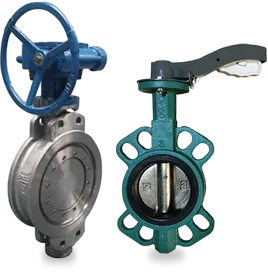Exploring the Functionality and Applications of Butterfly Valves in Various Industrial Settings
Understanding Butterfly Valves A Comprehensive Overview
Butterfly valves are essential components in various industrial applications, playing a critical role in regulating the flow of liquids and gases. Their simple design and efficient operation have made them a popular choice in many sectors, including water treatment, oil and gas, chemical processing, and HVAC systems. In this article, we will explore the workings, advantages, applications, and maintenance of butterfly valves.
What is a Butterfly Valve?
A butterfly valve consists of a circular disk, known as the butterfly, mounted on a rotating shaft. The disk is positioned in the center of the pipe, and when rotated, it either allows or restricts the flow through the valve. The operation of the butterfly valve is straightforward turning the shaft opens or closes the valve, providing a quick and efficient means of controlling flow.
Types of Butterfly Valves
Butterfly valves can be categorized into several types based on their design and functionalities. The most common types include
1. Concentric Butterfly Valve The disc is mounted on a shaft that is centered in the valve body. This design is simple and cost-effective, making it commonly used for water and sewage applications.
2. Eccentric Butterfly Valve In this design, the shaft is offset from the center of the valve. This feature reduces the torque needed to operate the valve and minimizes wear on the sealing surfaces, making it ideal for handling slurries and viscous fluids.
3. Double Eccentric Butterfly Valve This type features two offsets, resulting in a more efficient sealing mechanism. It is suitable for high-pressure applications and offers a longer service life.
4. Triple Eccentric Butterfly Valve This sophisticated design features three offsets, allowing for exceptional sealing capabilities. It is often used in highly critical applications where leakage must be minimized.
Advantages of Butterfly Valves
Butterfly valves offer numerous advantages that contribute to their wide adoption
- Compact Design Their slim profile allows for space-saving installation, especially in tight areas.
butterfly valve

- Quick Operation The valve can be opened and closed with a quarter turn, enabling rapid flow regulation
.- Low Pressure Drop Due to their design, butterfly valves minimize pressure loss, making them energy-efficient.
- Cost-Effective Generally, they are more affordable than other valve types, adding to their popularity in various processes.
Applications
Butterfly valves are used extensively across various industries. In the water and wastewater treatment industry, they control the flow of treated water, sewage, and sludge. In the oil and gas sector, they manage the flow of crude oil, natural gas, and refined products. In the chemical industry, butterfly valves regulate the flow of chemicals and solvents, offering a combination of durability and safety. Additionally, they are widely utilized in HVAC systems for temperature control and air management.
Maintenance and Care
To ensure the longevity and reliable performance of butterfly valves, regular maintenance is crucial. Here are some key maintenance practices
- Regular Inspection Periodically inspect the valve for wear, corrosion, and leaks. Look for signs of damage to the seals and disc.
- Lubrication Keep the valve's moving parts well-lubricated to prevent friction and wear.
- Cleaning Ensure that the valve is kept clean, free from debris, and properly positioned during operation.
- Actuator Checks If equipped with an actuator, regularly test its functionality to ensure proper operation.
In conclusion, butterfly valves are versatile, efficient, and cost-effective solutions for flow control in various industrial applications. Their simple yet effective design, coupled with a range of types suited for different needs, makes them an invaluable component in modern infrastructure. Proper maintenance practices can ensure their reliability and durability, further enhancing their role in industrial processes.
-
The Key to Fluid Control: Exploring the Advantages of Ball Valves in Industrial SystemsNewsJul.09,2025
-
The Versatile World of 1, 2, and 3 Piece Ball ValvesNewsJul.09,2025
-
Stainless Steel Ball Valves: The Ideal Choice for Efficient Flow ControlNewsJul.09,2025
-
Optimizing Fluid Control with Ball Float ValvesNewsJul.09,2025
-
Manual Gate Valves: Essential for Control and EfficiencyNewsJul.09,2025
-
Everything You Need to Know About Butterfly ValvesNewsJul.09,2025
-
The Versatility of Wafer Type Butterfly ValvesNewsJul.08,2025




